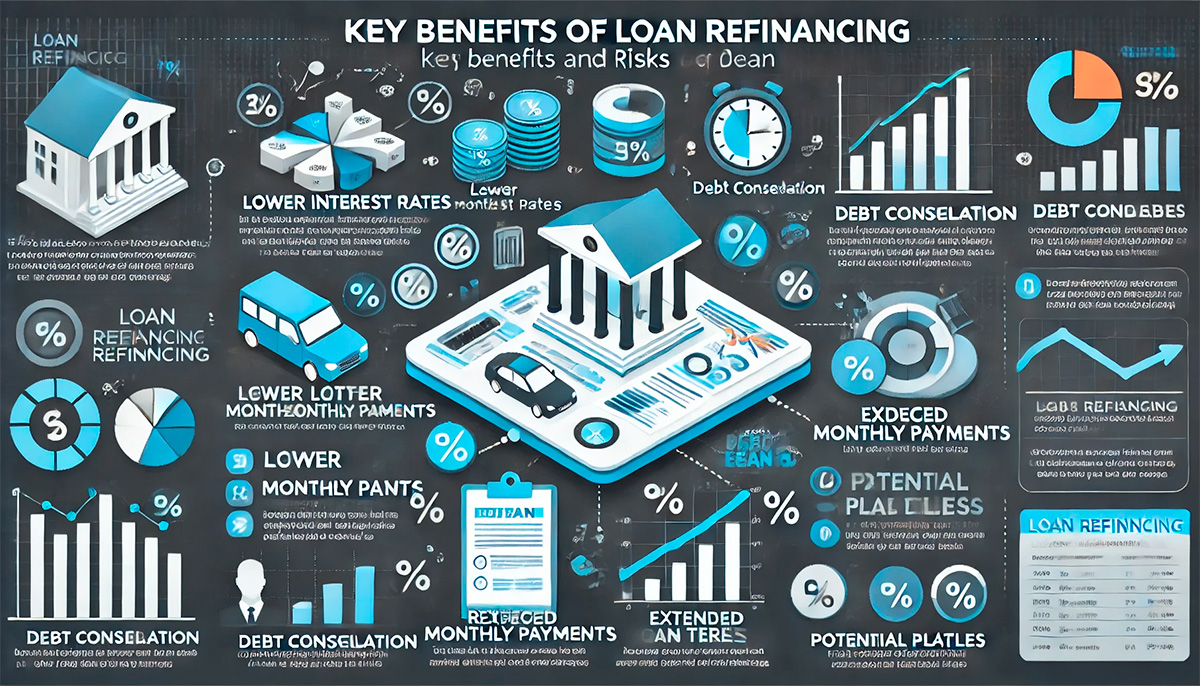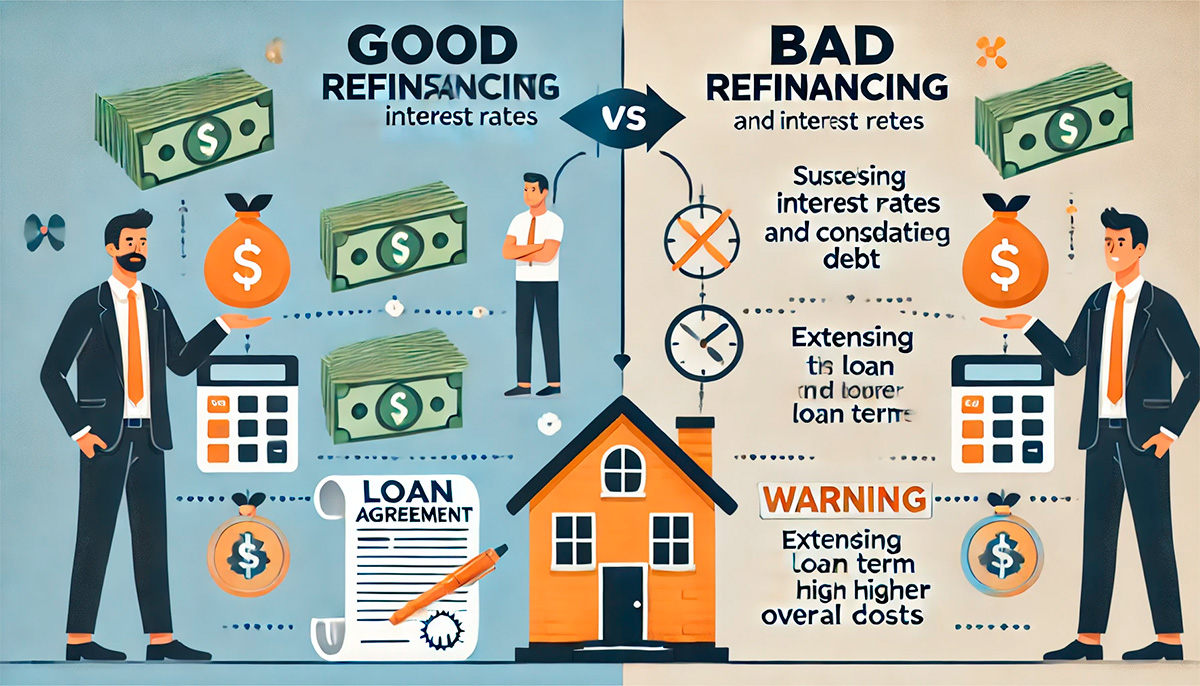In the labyrinth of personal finance, where every decision can feel like a step toward either liberation or entrapment, loan refinancing emerges as a beacon of hope for many. It is a financial strategy that, when wielded with precision and understanding, can transform burdensome debt into a manageable, even advantageous, aspect of one’s financial portfolio. But like any powerful tool, it must be used judiciously. This article delves into the intricacies of loan refinancing, exploring when it is beneficial and how to harness its potential effectively.
Understanding Loan Refinancing
At its core, loan refinancing is the process of replacing an existing loan with a new one, typically with more favorable terms. This can mean securing a lower interest rate, reducing monthly payments, altering the loan term, or even consolidating multiple debts into a single, more manageable payment. The allure of refinancing lies in its promise of financial relief, but it is not a one-size-fits-all solution. The decision to refinance should be guided by a thorough understanding of one’s financial situation and the potential benefits and drawbacks of the process.
Imagine, if you will, a ship navigating treacherous waters. The original loan is the vessel, sturdy but perhaps not as efficient as it could be. Refinancing is the opportunity to retrofit the ship with better sails, a more efficient engine, or even a new route that avoids the worst of the storms. But just as a ship’s captain must weigh the costs and benefits of such changes, so too must a borrower carefully consider the implications of refinancing.

When Is Loan Refinancing Beneficial?
The benefits of loan refinancing are manifold, but they are not universal. The first and most obvious advantage is the potential for a lower interest rate. In a world where interest rates fluctuate like the tides, securing a lower rate can significantly reduce the total cost of the loan. This is particularly advantageous for long-term loans, such as mortgages, where even a small reduction in the interest rate can translate into substantial savings over the life of the loan.
Another scenario where refinancing shines is when a borrower’s credit score has improved since the original loan was taken out. A higher credit score can unlock access to more favorable loan terms, including lower interest rates and better repayment options. It’s like being upgraded from economy to first class—more legroom, better service, and a smoother ride overall.
Refinancing can also be a lifeline for those struggling with high monthly payments. By extending the loan term, borrowers can reduce their monthly financial burden, freeing up cash for other expenses or savings. However, it’s important to note that while this can provide immediate relief, it may also result in paying more interest over the life of the loan. It’s a trade-off that requires careful consideration.
For those juggling multiple debts, refinancing can offer the convenience of debt consolidation. Combining several loans into one can simplify the repayment process, reduce the number of payments to keep track of, and potentially lower the overall interest rate. It’s like consolidating a cluttered desk into a single, organized workspace—everything is easier to manage and less overwhelming.
| Scenario | Benefit of Refinancing |
|---|---|
| Lower Interest Rates | Reduces total cost of the loan |
| Improved Credit Score | Access to more favorable loan terms |
| High Monthly Payments | Reduces monthly financial burden |
| Multiple Debts | Simplifies repayment through consolidation |
To harness the power of loan refinancing, one must approach it with a strategic mindset. The first step is to conduct a thorough assessment of one’s financial situation. This includes reviewing current loan terms, understanding the total cost of the loan, and evaluating one’s credit score. Armed with this information, a borrower can begin to explore refinancing options and determine whether the potential benefits outweigh the costs.

How to Use Loan Refinancing Effectively
Next, it’s essential to shop around for the best refinancing offers. Just as one wouldn’t buy the first car they test drive, it’s important to compare multiple lenders to find the most favorable terms. This may involve negotiating with lenders, seeking out promotional offers, or even consulting with a financial advisor. The goal is to secure a refinancing deal that aligns with one’s financial goals and provides the greatest benefit.
Once a suitable refinancing option has been identified, it’s crucial to read the fine print. Refinancing can come with fees, such as application fees, origination fees, and prepayment penalties. These costs can eat into the potential savings, so it’s important to factor them into the decision-making process. Additionally, borrowers should be aware of any changes to the loan term, as extending the term can result in paying more interest over time.
Finally, it’s important to have a clear plan for how the savings from refinancing will be used. Whether it’s paying down other debts, building an emergency fund, or investing in the future, having a purpose for the extra cash can help ensure that refinancing leads to long-term financial stability rather than short-term relief.
Potential Pitfalls of Loan Refinancing
While loan refinancing can be a powerful tool, it is not without its risks. One of the most significant pitfalls is the temptation to extend the loan term in order to reduce monthly payments. While this can provide immediate financial relief, it can also result in paying more interest over the life of the loan. It’s like taking a longer route to avoid traffic—you might arrive at your destination more comfortably, but it will take longer and cost more in fuel.
Another potential downside is the impact of refinancing on one’s credit score. Applying for a new loan typically results in a hard inquiry on one’s credit report, which can temporarily lower the credit score. Additionally, closing an old loan and opening a new one can affect the length of one’s credit history, another factor that influences credit scores. It’s important to weigh these potential impacts against the benefits of refinancing.
Finally, refinancing is not a cure-all for financial woes. It can provide relief and improve one’s financial situation, but it is not a substitute for sound financial management. Borrowers should continue to practice good financial habits, such as budgeting, saving, and avoiding unnecessary debt, to ensure long-term financial health.
Conclusion
Loan refinancing is a versatile and powerful tool that, when used wisely, can provide significant financial benefits. Whether it’s securing a lower interest rate, reducing monthly payments, or consolidating debt, refinancing can help borrowers navigate the often turbulent waters of personal finance. However, it is not a decision to be taken lightly. Borrowers must carefully consider their financial situation, shop around for the best terms, and be mindful of potential pitfalls.
In the end, loan refinancing is like a well-crafted map—it can guide you to your destination, but it’s up to you to choose the right path and navigate the journey with care. By understanding when and how to use loan refinancing, borrowers can unlock its potential and steer their financial ship toward calmer, more prosperous waters.

